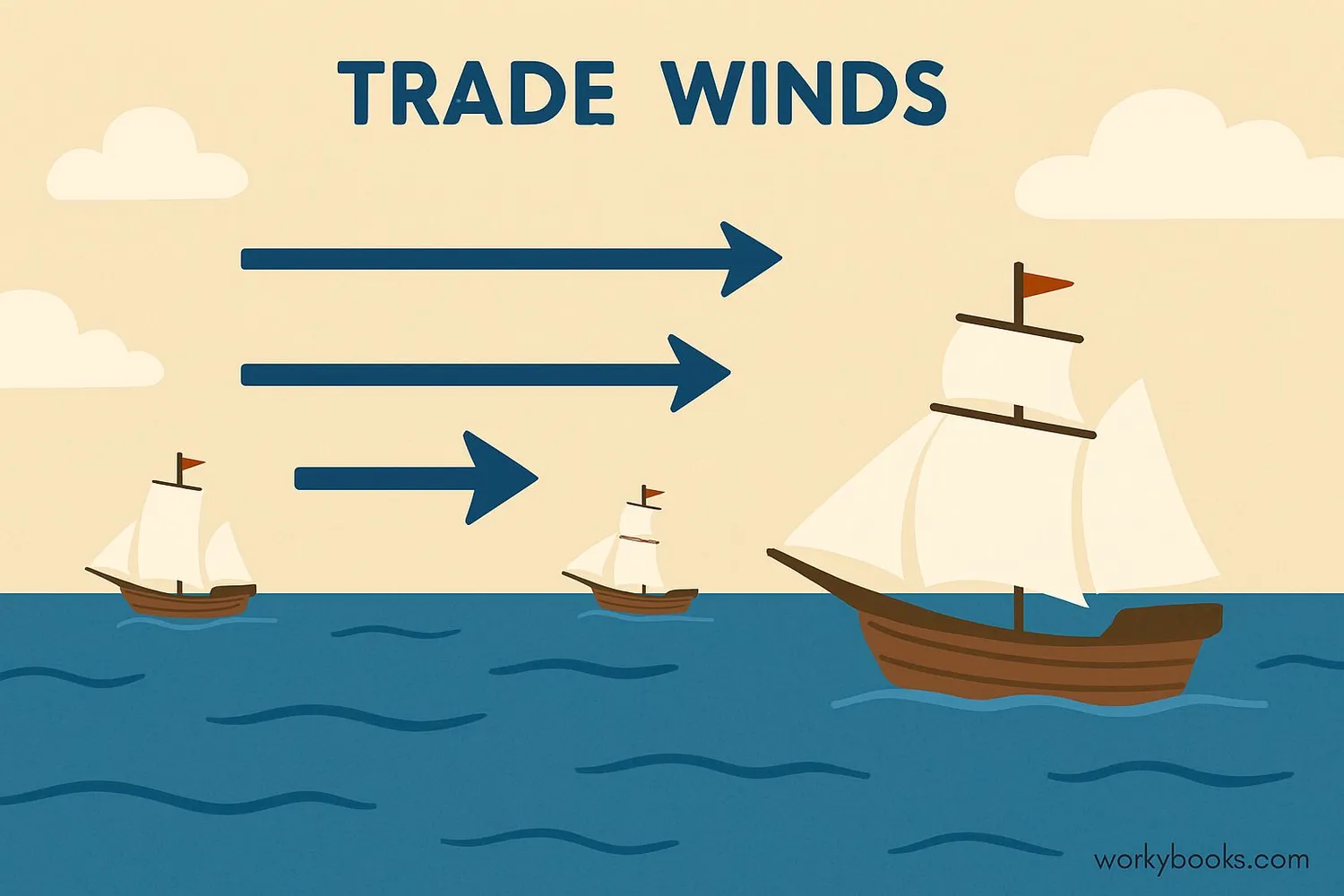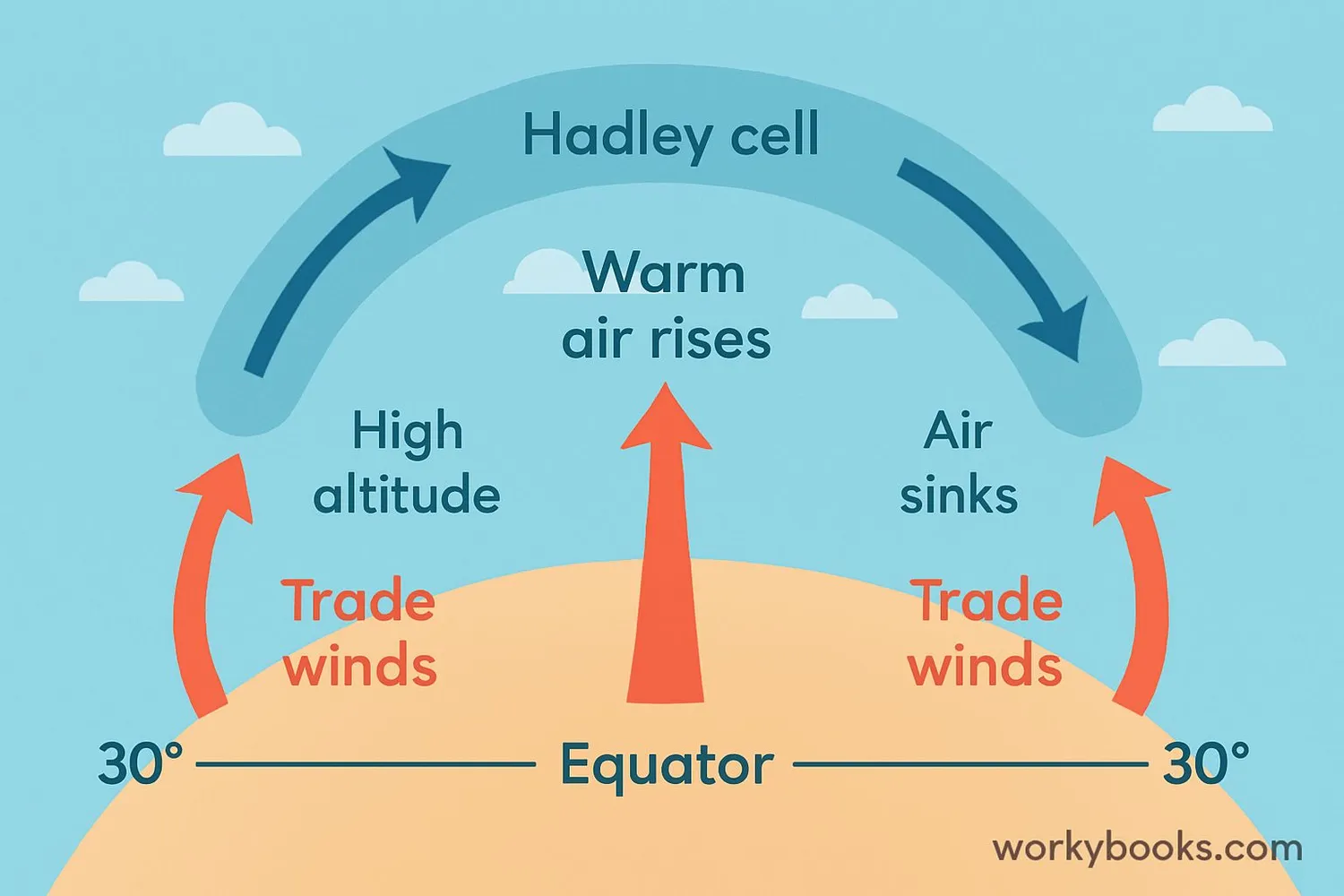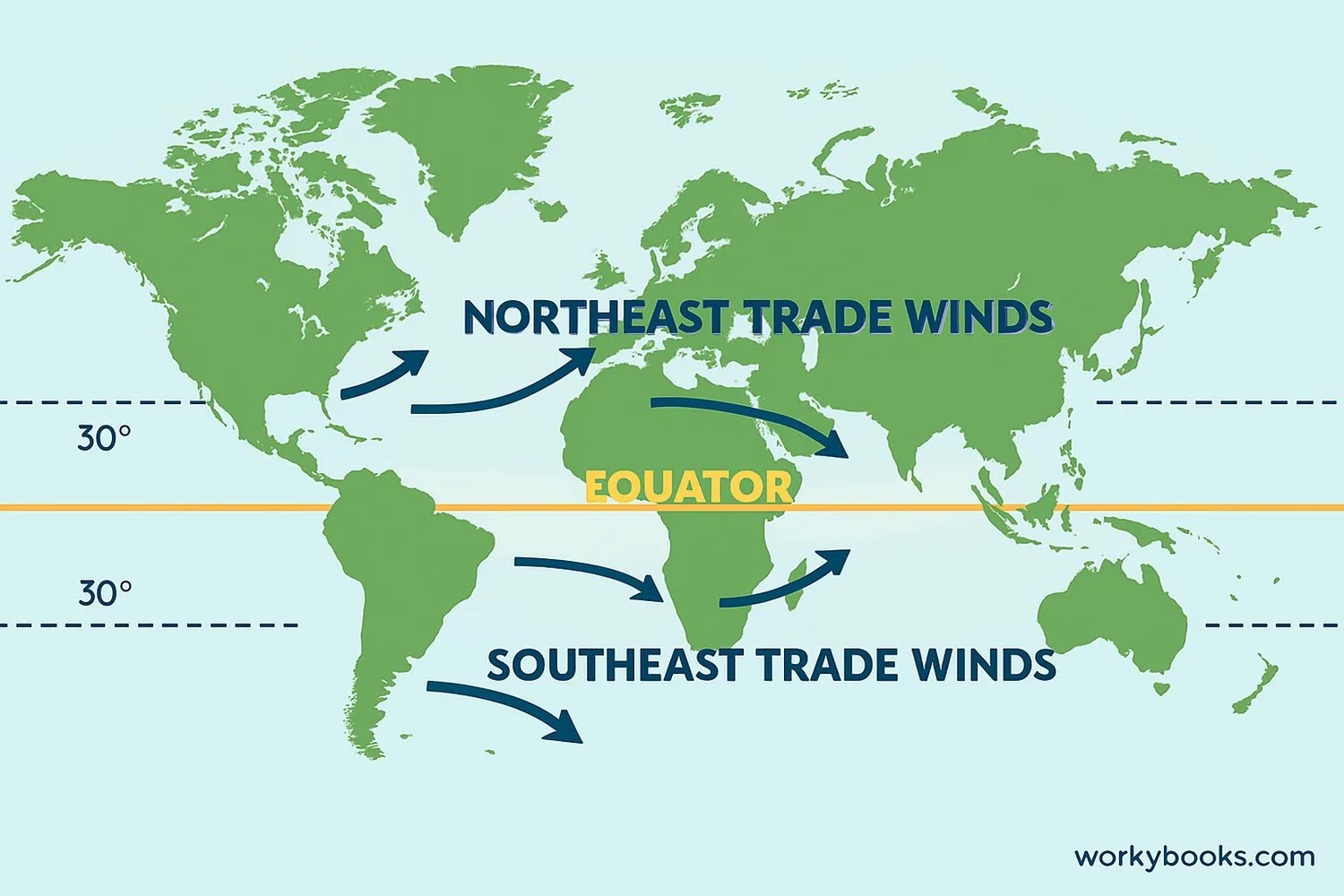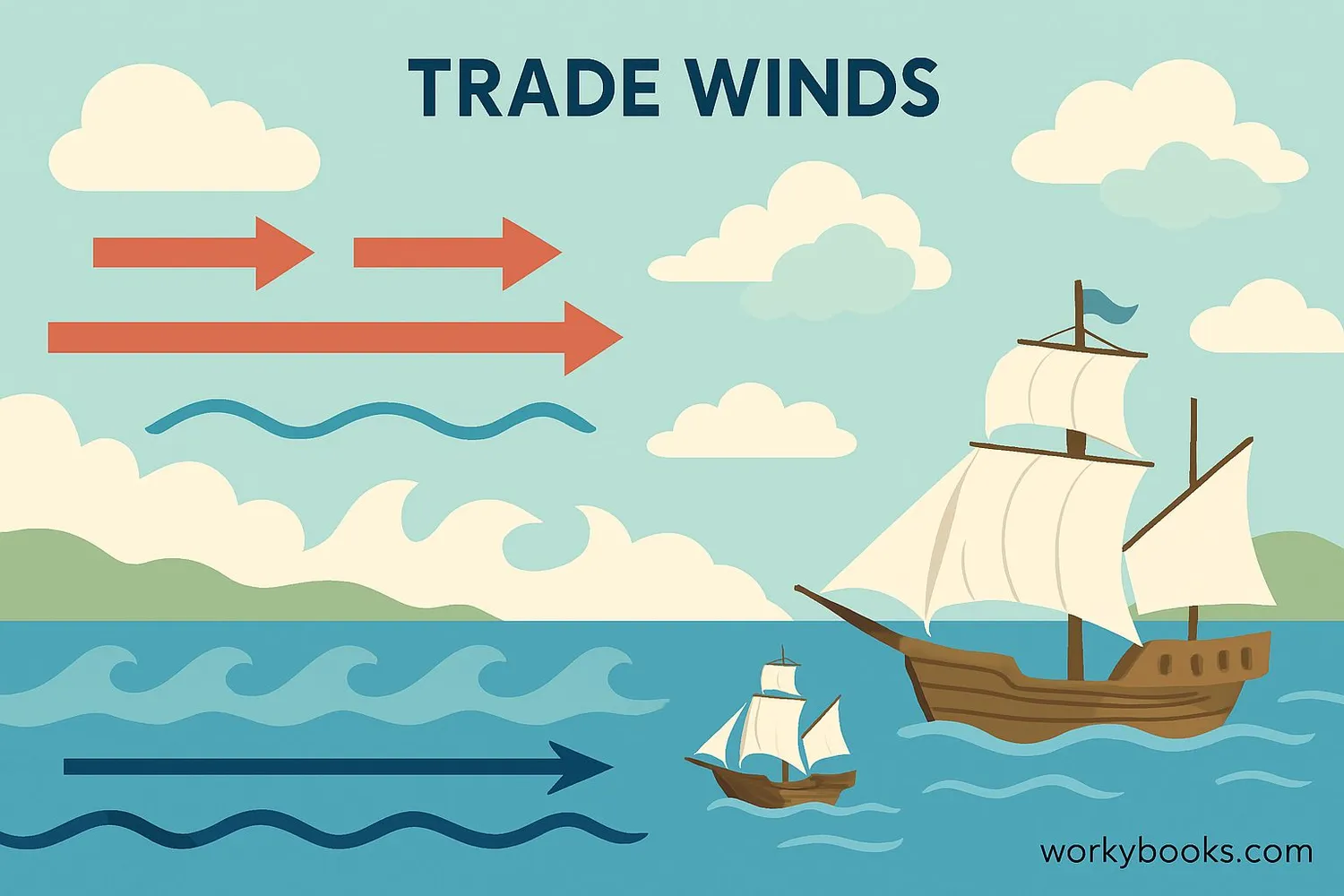Trade Winds - Definition, Examples, Quiz, FAQ, Trivia
Discover the powerful winds that shaped exploration and weather patterns around the world!
What are Trade Winds?

Trade winds are steady winds that blow from east to west near the Earth's equator. They're called "trade winds" because sailors used these reliable winds to trade goods between continents centuries ago.
These winds blow between about 30° north and 30° south of the equator. In the Northern Hemisphere, they blow from the northeast toward the southwest. In the Southern Hemisphere, they blow from the southeast toward the northwest.
Trade winds are part of Earth's global wind system and play a crucial role in our planet's weather patterns. They're also known as "tropical easterlies" because they come from the east.
Definition Fact!
The name "trade winds" comes from the Middle English word "trade," meaning "path" or "track," because sailors followed these winds like a path across the oceans.
What Causes Trade Winds?

Trade winds are caused by a combination of Earth's rotation and the way sunlight heats our planet. Here's how it works:
Sun Heats Equator
Sunlight heats the equator more than other areas, causing warm air to rise
Air Circulation
Rising air creates a low-pressure area near the equator
Cool Air Sinks
The air cools and sinks around 30° north and south latitude
Surface Winds
Sinking air creates high pressure, pushing surface air toward the equator
Coriolis Effect
Earth's rotation deflects these winds, creating northeast and southeast trade winds
This circulation pattern is called the Hadley cell, named after scientist George Hadley who described it in 1735. The Coriolis effect (caused by Earth's rotation) makes the winds curve rather than flowing straight north or south.
Ferrel's Law explains this deflection: In the Northern Hemisphere, winds curve to the right, while in the Southern Hemisphere, they curve to the left.
Global Circulation Fact!
The area near the equator where the trade winds from both hemispheres meet is called the Intertropical Convergence Zone (ITCZ) or "doldrums," where winds are often calm.
Trade Winds Direction and Consistency

Trade winds are known for their steady direction and reliability. Here's what makes them so consistent:
Direction
NE in Northern Hemisphere, SE in Southern Hemisphere
Consistency
Blow more constantly than winds in other regions
Speed
Typically blow at 11-20 mph (18-32 km/h)
The consistency of trade winds comes from the steady heating at the equator and the reliable circulation patterns in the atmosphere. Sailors could count on these winds to carry their ships across oceans for trade between Europe, Africa, and the Americas.
Near the equator, where trade winds from both hemispheres meet, there's an area called the Intertropical Convergence Zone (ITCZ). This zone has light, variable winds and frequent rainstorms.
Impact of Trade Winds

Trade winds have significant effects on our planet's weather, climate, and human history:
Weather Patterns
Influence tropical storms and rainfall distribution
Ocean Currents
Push surface water, creating major ocean currents
Climate Zones
Help create tropical rainforests on east coasts and deserts on west coasts
Historically, trade winds enabled the "Age of Exploration" by providing reliable routes for sailing ships. Christopher Columbus used the northeast trade winds to sail to the Caribbean, and the west-blowing winds further north to return to Europe.
Trade winds also:
• Influence hurricane paths in the Atlantic
• Help cool tropical regions
• Affect rainfall patterns in coastal areas
• Drive major ocean currents like the Gulf Stream
Trade Winds Quiz
Test your knowledge about trade winds with this interactive quiz! Answer all 5 questions to see how much you've learned.
Frequently Asked Questions
Here are answers to some common questions about trade winds:
Fun Trade Winds Trivia
Discover some amazing facts about trade winds!
Historical Significance
Trade winds enabled the Columbian Exchange, the transfer of plants, animals, and cultures between the Old World and New World that transformed global societies.
Island Weather Maker
Hawaii's rainy and dry sides are created by trade winds! Winds push moisture against mountains, making the northeast sides rainy and the southwest sides dry.
Ocean Current Driver
Trade winds push ocean water westward, creating currents like the North Equatorial Current that moves at about 10-20 miles per day across the Atlantic.
Sailing Record
In 1834, a ship called the "Red Jacket" sailed from New York to Liverpool in just 13 days using trade winds - a record that stood for over 30 years!





